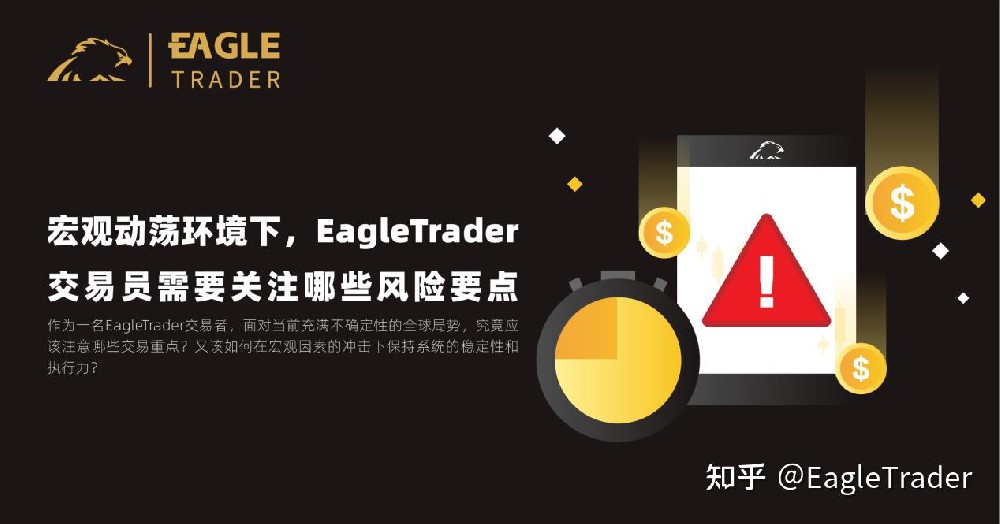In the macro turbulent environment, what risks should EagleTrader traders pay attention to?
- 2025年6月25日
- Posted by: Eagletrader
- Category: News
In recent years, the global financial market has shown a clear “unstable and steady state”: the repeated U.S. interest rate policy, continuous heating of geopolitical risks, and frequent abnormal movements in commodity prices, making the trading environment even more complicated. In such a cycle of macro variables, many traders began to feel “miss judgment and failure of strategy”, and even encountered a significant pullback due to sudden market conditions, and all previous efforts were wasted.
So, as an EagleTrader trader, in the face of the current uncertain global situation, what trading priorities should be paid attention to? How to maintain the stability and execution of the system under the impact of macro factors?

Frequent macro disturbances, and the strategy gradually failed
First look at a few major variables in recent months:
The Federal Reserve’s interest rate policy has been repeated: from “suspended interest rate hikes” to “may bets on another time”, and then to the market betting on “three interest rate cuts at the end of the year”, The swaying expectations has caused the US dollar index to fluctuate violently;
Georological risks are heating up: the situation in the Middle East is tense, the Red Sea route is frequently blocked, and the conflict between Russia and Ukraine still shows no signs of resolution, resulting in frequent surges and plummeting crude oil and gold prices;
Abnormal fluctuations in the Japanese yen and the RMB: the Bank of Japan’s intervention expects frequent, and Asian currencies are under passive pressure;
Global inflation is difficult to decline: CPI and PPI data show stickiness and regional differentiation, affecting the central bank’s policy orientation.
The superposition of multiple variables makes many trading models with high winning rates invalid, especially strategies that rely on trend judgment or macro expectations, which often encounter reverse impacts due to emergencies.
With macro uncertainty, five key trading notes
1. Don’t bet on the direction, wait for market reaction
Faced with key nodes such as non-agricultural, CPI, and interest rate resolutions, many traders are accustomed to entering the market in advance to “bet on the direction”, but the current data often has long favors and no negative negatives. A more effective way is to wait for the data to be released, enter the market based on market reactions, and execute the transaction based on technical confirmation.
2. Control positions and stay away from excessive leverage
The stronger the uncertainty, the greater the market volatility, especially sensitive varieties such as gold, crude oil, and Nasdaq. They often “change direction with a K-line.” In this environment, maintaining low leverage operation is the foundation for protecting the principal and continuing the life of trading.
Suggested position control ideas:
The amount of stop loss shall not exceed 1.5% of the account funds;
On the eve of high volatility data, no positions are held or only the bottom positions are left;
Set slippage buffer stop loss to prevent the market from jumping to expand losses.
3. Improve strategic flexibility and regularly evaluate adaptability
The old market logic—such as “the dollar rises = gold falls”—is gradually becoming ineffective. In the new environment, trading strategies need to be more integrated with dynamic weight adjustments to adapt to the switching of market drivers.
Feable practices:
Create a strategy tracking log and mark a strategy failure scenario; use technical indicators to replace subjective judgments, such as volatility channels or Bollinger bandwidth changes;
Increase the proportion of non-directional strategies (such as interval oscillation trading).
4. Pay attention to important weekly data or events
In a high uncertainty cycle, it is recommended that every trader always pay attention to the release of important data every week or major events. Mark out data or events that will cause violent fluctuations in advance, actively avoid blind spots, flexibly adjust your trading, and avoid being affected by macro factors.
5. One of the biggest misunderstandings in avoiding excessive dependence on historical experience
Trading is to over believe in the logic of the past. The uncertainty of macro variables essentially breaks the stability of many historical statistics. What’s more important now is to make decisions with real-time data reactions, rather than relying on past experience.
Uncertainty does not mean there is no opportunity
It is worth mentioning that high volatility does not mean there is no trading opportunity, but instead brings new space to structural varieties and event-driven strategies. For example:
Gold hit record highs in March and April, with a significant long-term trend;
Crude oil has a short-term pull-up opportunity under the influence of geopolitical tensions; safe-haven currencies (such as Swiss francs and Japanese yen) have become the first choice for event trading;
interest rate-related cross-currency pairs have arbitrage space.
The key to these is whether you have a trading system that adapts to macro fluctuations and can flexibly adjust positions and directions.
We cannot control the trend of macro variables, but at least we can control our own execution rhythm. EagleTrader always emphasizes risk control discipline, such as prohibiting trading related products within two minutes before and after the release of important data. This is not to restrict traders’ freedom, but to hope that everyone will learn to avoid impulses and stick to the system when facing high risks.
When the next sudden market comes, we may not be able to predict the direction accurately in advance, but we can completely build a response mechanism in advance. After all, the real risk does not lie in the market volatility itself, but in the loss of the trader in chaos.
